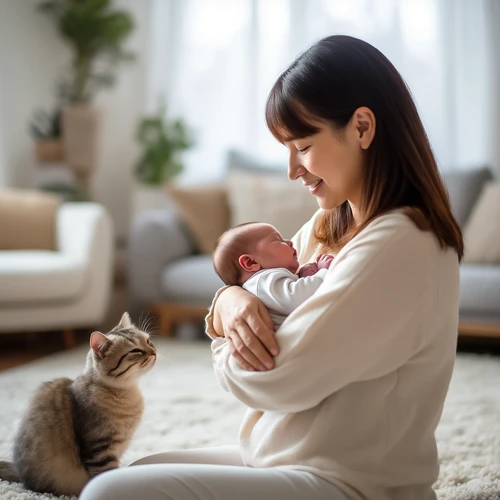Bringing a newborn into a home with pets can be a joyful experience, but it also introduces potential risks for both the baby and the animal. Parents must be proactive in creating a safe environment where the little one and the family pet can thrive together. This guide offers practical steps to safeguard your infant while fostering a healthy relationship between them.
Understand Your Pet’s Behavior
Dogs and cats have instinctual reactions that may become more pronounced when a baby arrives. A dog’s protective instinct could lead to excessive guarding or, conversely, a sudden bout of excitement. A cat may show curiosity by stalking or scratching. Observe how your pet reacts to changes such as new sounds, smells, and the baby’s presence. This baseline knowledge helps you anticipate potentially dangerous moments.
Introduce Gradually
Never force a direct interaction between your infant and pet. Start by letting the animal sniff a piece of clothing or a blanket the baby frequently uses. Allow the pet to learn the baby’s scent and texture in a calm setting. Over days or weeks, let the pet approach the baby’s crib or a padded play area for short periods while you supervise closely.
Set Boundaries
Create safe zones for the baby that exclude the pet, such as an enclosed bassinet or a playpen. For pets, use a sturdy crate or a designated room when you’re not home. This reduces the risk of accidental knock-overs and keeps the baby’s environment free of loose toys or hazards that a curious animal might ingest.
Teach Gentle Handling
Whenever your pet approaches the baby, gently guide them away if they begin to nip, paw, or lunge. Use a calm voice and a firm hand. Reward the animal with treats or affection when they respond to your cues. Consistent training teaches the pet that the baby is safe but requires respectful behavior.
Supervision Is Key
Never leave the baby unattended near pets, even if you believe your animal is trustworthy. Babies can be unpredictable, and small movements can surprise even the calmest pet. Keep the infant in a crib or high chair that’s out of reach or place a barrier like a baby gate, ensuring the pet can’t sneak up when you’re not looking.
Safety Around the House
- Bottle and Pacifier Safety: Keep sharp plastic caps, bottle caps, and pacifiers out of reach.
- Electrical Cords: Secure cords behind pet feeding bowls or in areas the animal can’t reach.
- Small Items: Remove loose toys or food that could be swallowed by or attract your pet.
- Furniture Protection: Use non-slip pads on furniture where the pet might rest near the baby’s crib.
Addressing Health Concerns
Vaccinations for pets should be up to date to reduce disease transmission. Handwashing before touching the baby or handling pet food is essential. If your pet shows signs of illness—such as vomiting, diarrhea, or lethargy—consult a veterinarian and keep the animal away from the infant until cleared.
When to Seek Professional Help
If you notice persistent aggressive or overly curious behavior from your pet, consider a professional trainer or a behaviorist. They can offer tailored strategies to improve your pet’s comfort with the baby’s presence.
By combining awareness, gradual introduction, consistent supervision, and clear boundaries, parents can create a harmonious, safe shared environment. This approach not only protects the newborn but also nurtures a lifelong bond between pet and child.


